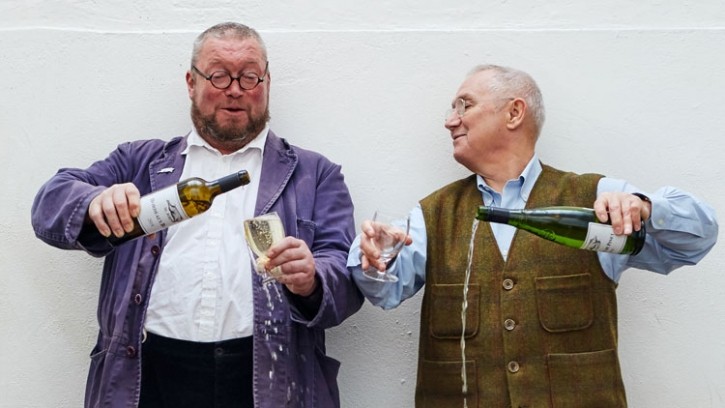
Sounds like an absolute bargain. Do I stand any chance of getting a table?
There’s more chance of getting a table at The Devonshire. Bookings – which were only available on weekdays – were snapped up pretty much instantly following the announcement, such is the appeal of being able to party like it’s 1994.
Shame. So how cheap is it?
The 1994 menu certainly offers incredible value but given the clock is being wound back three decades it’s perhaps not quite as inexpensive as one might think given that a pint of lager was around £1.50 back then. Starters average £5 and mains cost about a tenner. Highlights include pig tongue and celeriac (£4.20); smoked cod’s roe on toast (£5.50); grilled lamb’s heart with beetroot and pickled walnut (£8.80); and – of course – St John’s iconic roast bone marrow and parsley salad (£4.20). Perhaps the most eye-catching bit of pricing is a bowl of buttered greens for £1.50. The menu is not set in stone, with St John head chef Jonathan Whittle sticking with the Clerkenwell restaurant’s policy of changing the menu for each service according to the kitchen’s ‘daily rigour and rhythms’.
What about the wine?
Sadly, St John’s exclusively French wine list remains set at today’s prices. Presumably, owners Fergus Henderson and Trevor Gulliver didn’t want to celebrate its 30th birthday by going bust.
What a bunch of party poopers. How else is St John celebrating?
A new limited-edition range of merchandise has been created featuring its ‘pivotal pig’ and the restaurant is throwing a party for the many chefs and front of house pros that have worked there. The list of people who have gone on to great things since working there is impressive and includes James Lowe, Lee Tiernan, Douglas McMaster, Daniel Burns, John Spiteri, and Anna Hansen.
They’re going to need to get in a lot of Fernet-Branca for that one. Why has St John proven to be such a landmark restaurant?
Henderson and Gulliver are singular restaurateurs who have ploughed their own furrow and are largely regarded as being responsible for putting British food on the culinary map. Henderson championed British recipes and ingredients at a time when they had fallen out of fashion and pioneered a nose-to-tail approach to cooking that had pretty much been forgotten and turned it into a phenomenon on these shores. There’s not a single restaurant in the country that has had a bigger effect on how we eat out today. St John has influenced the menus of country pubs right up to fine dining restaurants.
How has St John managed to stay relevant after all these years?
The restaurant is notable for having never tried to rip it all up and start again. With its whitewashed walls and utilitarian feel, it manages to feel fresh and relevant thanks to what is probably best described as a policy of gentle evolution. As Gulliver says: “May the good ship St John sail on, always the same but never the same”. Here’s to many more years.









